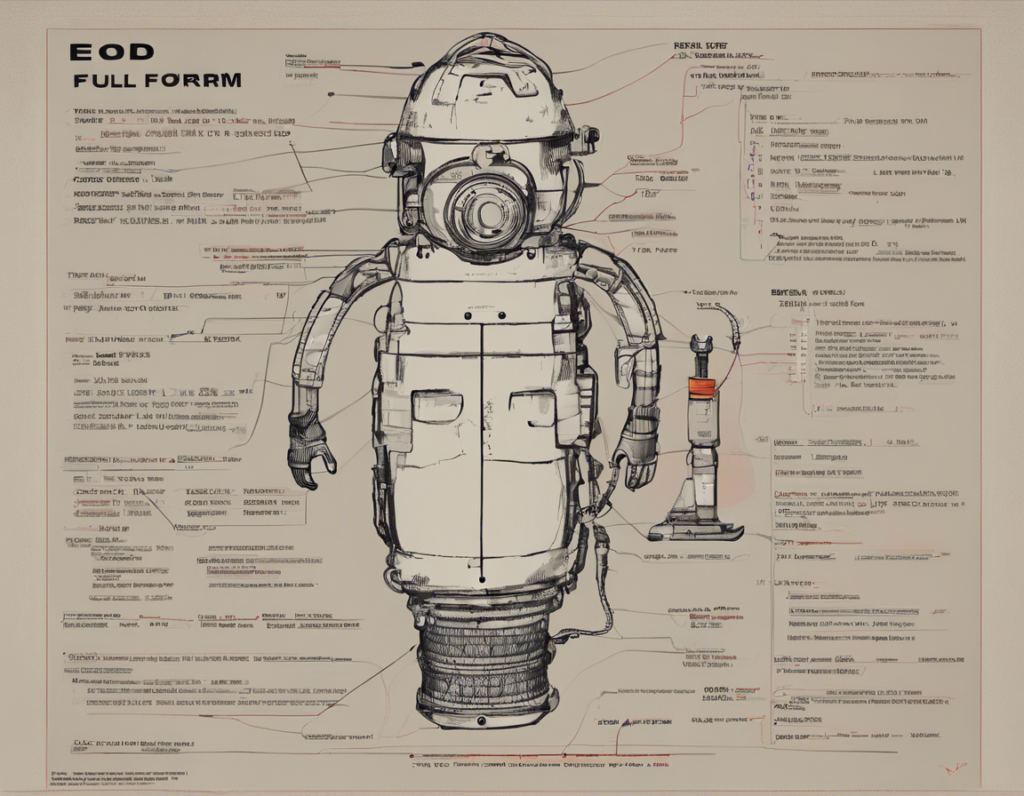In the realm of military and law enforcement jargon, the acronym EOD holds great significance. Standing for Explosive Ordnance Disposal, EOD refers to the process of safely identifying, assessing, and disposing of explosive devices like bombs and ammunition. EOD technicians are specially trained individuals who specialize in handling such dangerous situations with precision and expertise. Let us delve deeper into the world of EOD and understand its various facets.
What is EOD?
EOD encompasses a set of protocols, techniques, and tools used to neutralize explosive devices. These devices can range from improvised explosive devices (IEDs) to unexploded ordnance (UXO) from past conflicts. The primary goal of EOD operations is to ensure the safety of personnel and civilians by rendering these explosives harmless.
The Role of EOD Technicians
EOD technicians play a crucial role in both military and civilian settings. Their tasks involve identifying explosive threats, evaluating the situation, and implementing the appropriate disposal methods. These individuals undergo rigorous training to handle various types of explosives and are equipped with specialized tools like robots, protective gear, and disposal containers.
EOD Procedures
1. Assessment
EOD technicians begin by assessing the situation to determine the type and level of threat posed by the explosive device. This step involves gathering information, conducting a risk assessment, and formulating a disposal plan.
2. Render Safe Procedures
Once the assessment is complete, technicians proceed with rendering the explosive device safe. This may involve techniques such as controlled detonation, robot-assisted disposal, or chemical neutralization, depending on the nature of the threat.
3. Disposal
After rendering the device safe, EOD technicians safely dispose of the explosive material to eliminate any potential risks. Proper disposal methods are critical to preventing accidents or harm to individuals and property.
EOD in Military Operations
In military operations, EOD plays a vital role in ensuring mission success and safeguarding troops from hidden dangers. EOD teams are frequently deployed in combat zones to deal with IEDs and other explosive threats that could impede military objectives.
EOD in Civilian Context
Beyond the military, EOD capabilities are also utilized in civilian scenarios. Law enforcement agencies, bomb squads, and emergency response teams rely on EOD expertise to handle bomb threats, suspicious packages, and other explosive hazards in civilian environments.
Importance of EOD Training
Training is a cornerstone of effective EOD operations. EOD technicians undergo intensive and ongoing training to stay abreast of the latest threats, technologies, and disposal techniques. Continuous training ensures that these specialists are well-prepared to handle any explosive situation they may encounter.
Conclusion
In conclusion, EOD serves as a vital component of modern security and defense measures. The expertise and dedication of EOD technicians play a critical role in safeguarding lives, infrastructure, and national security from explosive threats. By understanding the intricacies of EOD procedures and the pivotal role these professionals play, we gain a deeper appreciation for the complexities of explosive ordnance disposal.
Frequently Asked Questions (FAQs) About EOD
Q1: What are the primary dangers faced by EOD technicians?
A1: EOD technicians face risks such as accidental detonations, exposure to hazardous materials, and physical harm from explosive devices.
Q2: How long does it take to become a certified EOD technician?
A2: Becoming a certified EOD technician typically requires several years of specialized training and experience in handling explosive ordnance.
Q3: Are EOD procedures different in military and civilian contexts?
A3: While the core principles of EOD remain consistent, the operational procedures and protocols may vary slightly between military and civilian environments.
Q4: What are some common tools used by EOD technicians?
A4: EOD technicians utilize tools such as bomb suits, X-ray machines, disruptors, and robots to safely handle and dispose of explosive devices.
Q5: How can individuals support EOD efforts?
A5: Individuals can support EOD efforts by remaining vigilant, reporting suspicious items or activities, and following safety protocols in situations involving potential explosives.
